Strategic thinking development Worksheets for 6-Year-Olds
10 filtered results
-
From - To
Unlock your child’s potential with our Strategic Thinking Development Worksheets, expertly designed for 6-year-olds. These engaging and age-appropriate activities foster critical thinking, problem-solving, and decision-making skills, laying a solid foundation for academic success. Our colorful and captivating worksheets inspire young minds to tackle challenges, plan ahead, and think logically. Perfect for both home and classroom use, these resources cater to varying difficulty levels, ensuring every child can progress at their own pace. Propel your child’s cognitive development with these fun, interactive tools, and watch their confidence and strategic thinking abilities soar!
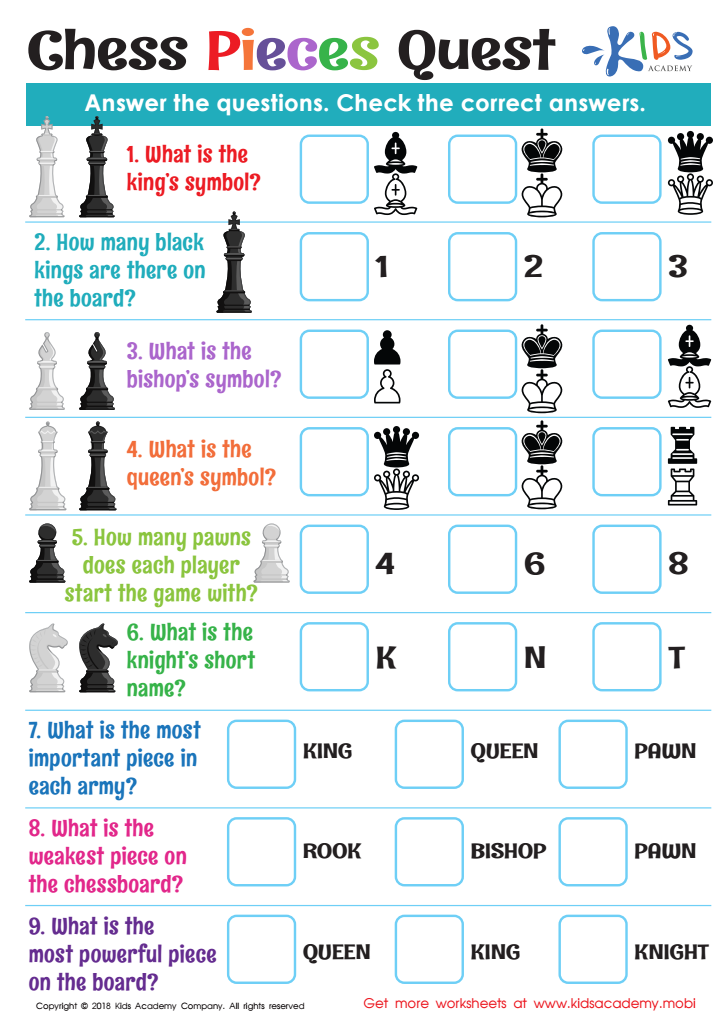

Chess Pieces Quest Worksheet


Notation of Moves Writing it Down Worksheet
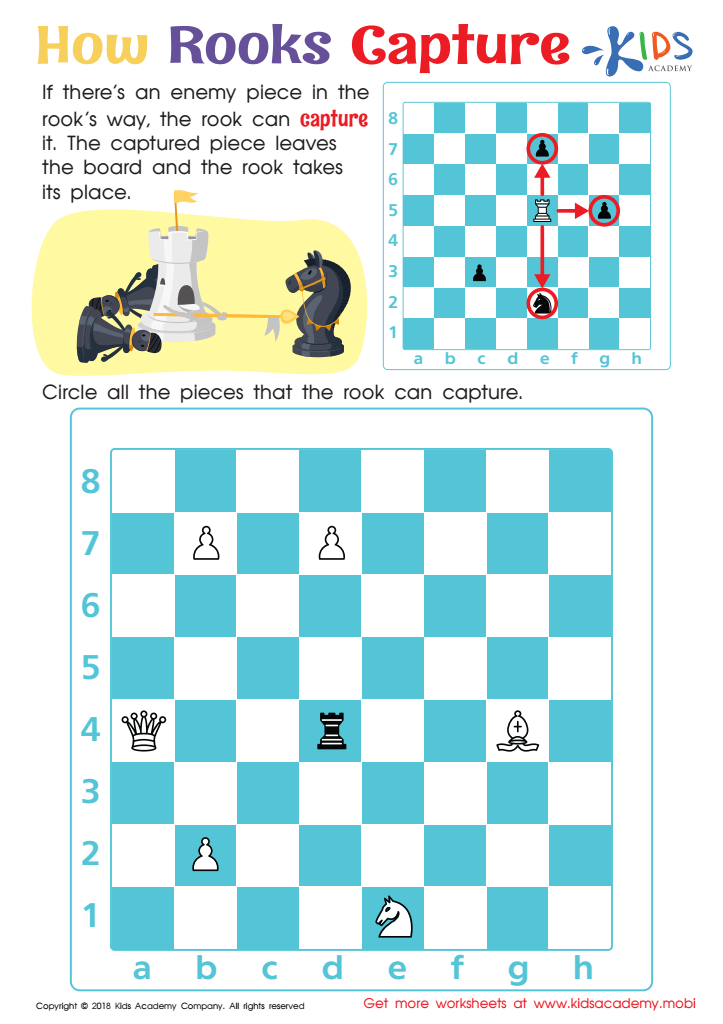

How Rooks Capture Worksheet
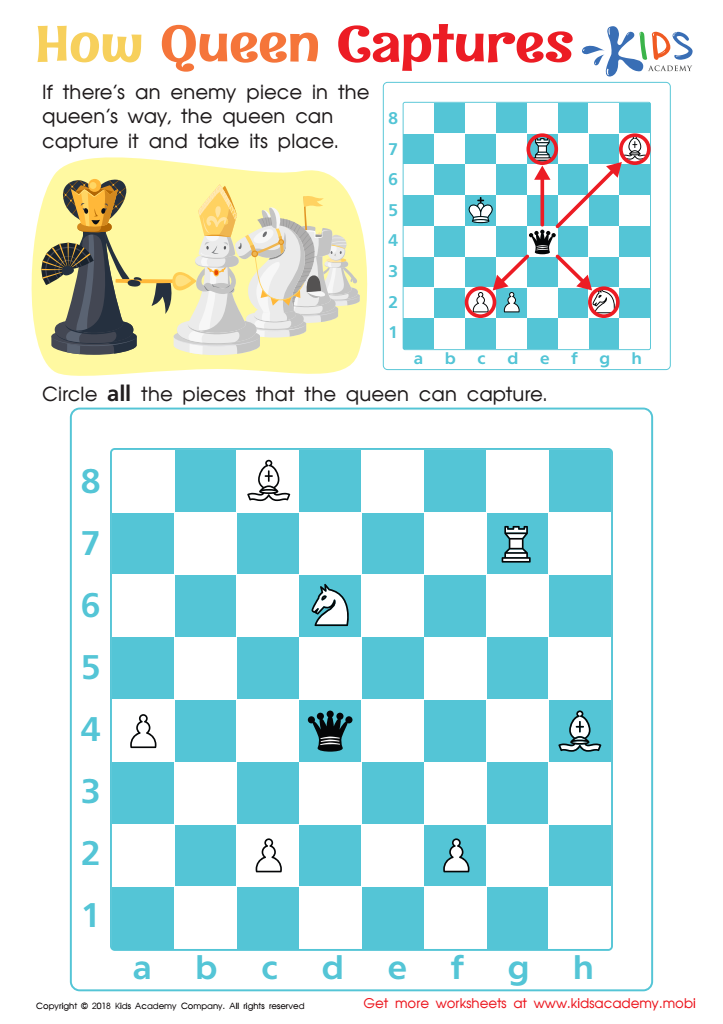

How Queen Captures Worksheet
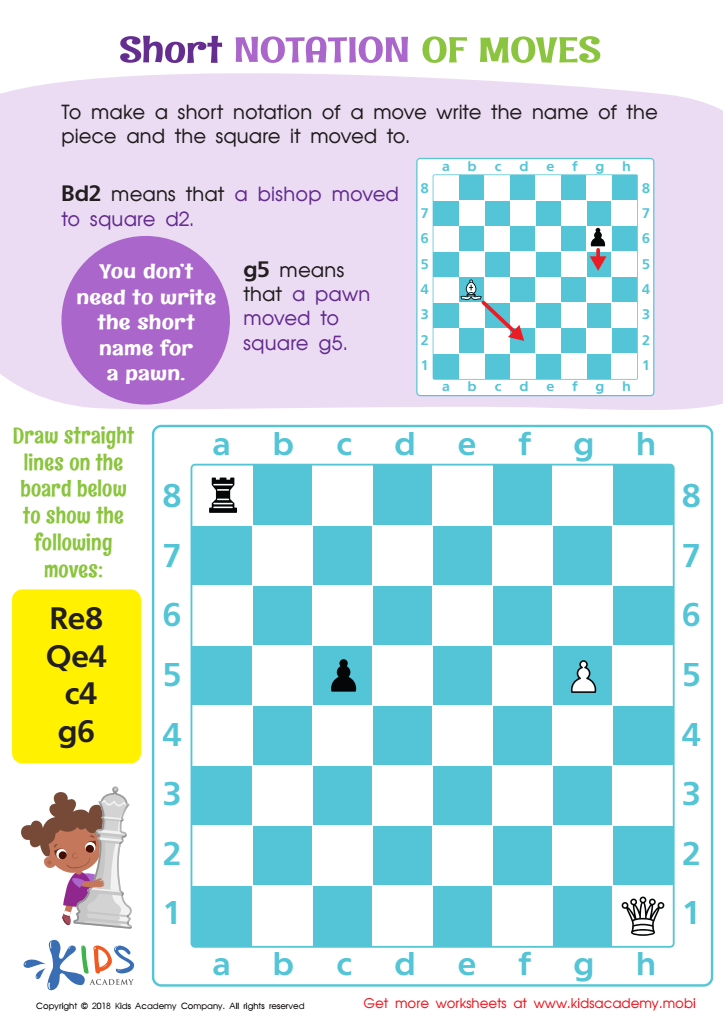

Short Notation of Moves Worksheet
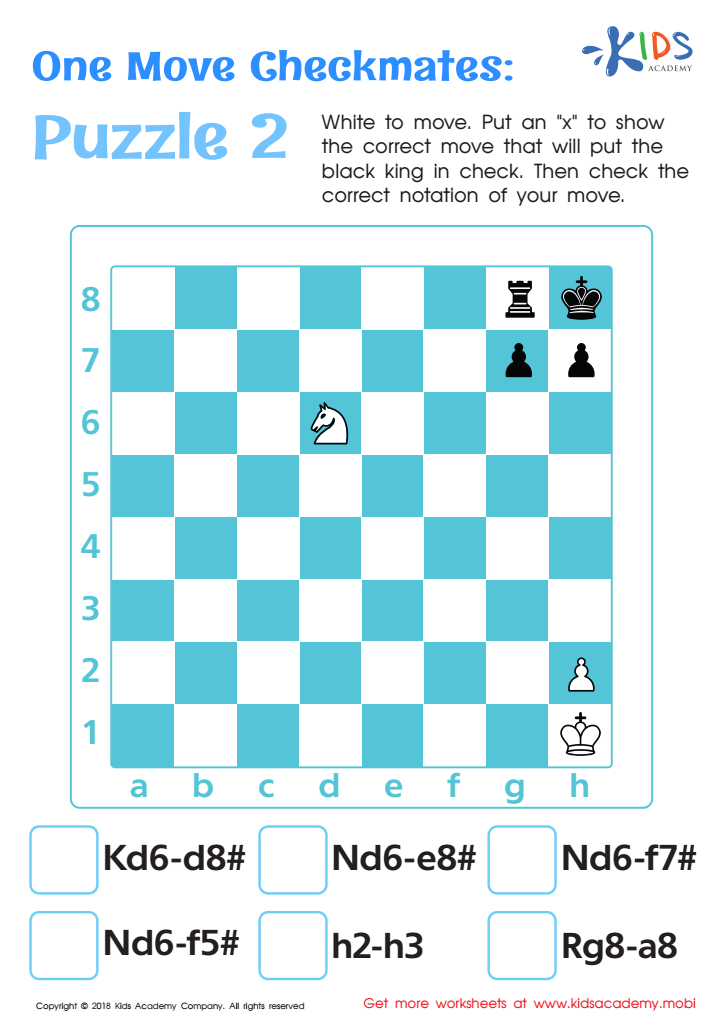

One Move Checkmates: Puzzle 2 Worksheet
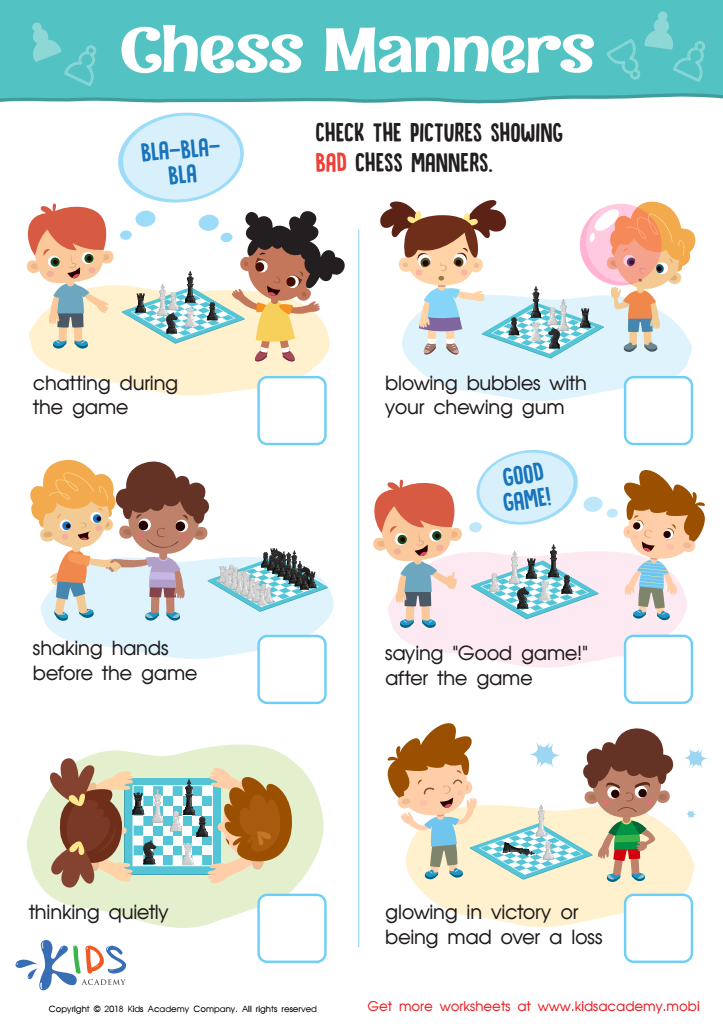

Chess Manners Worksheet
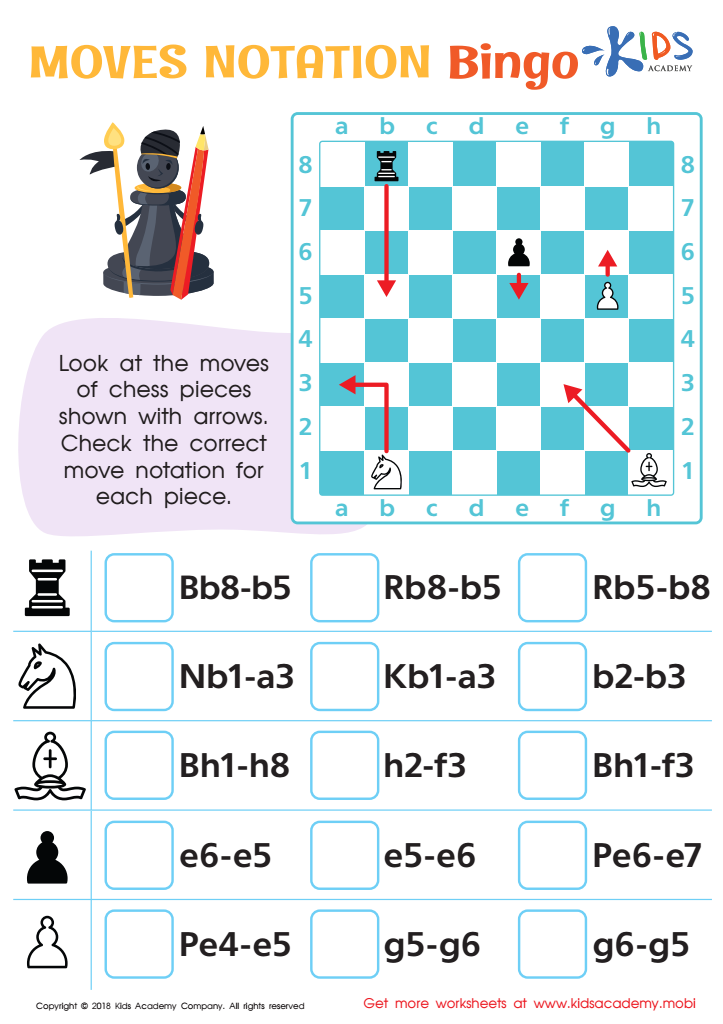

Moves Notation Bingo Worksheet
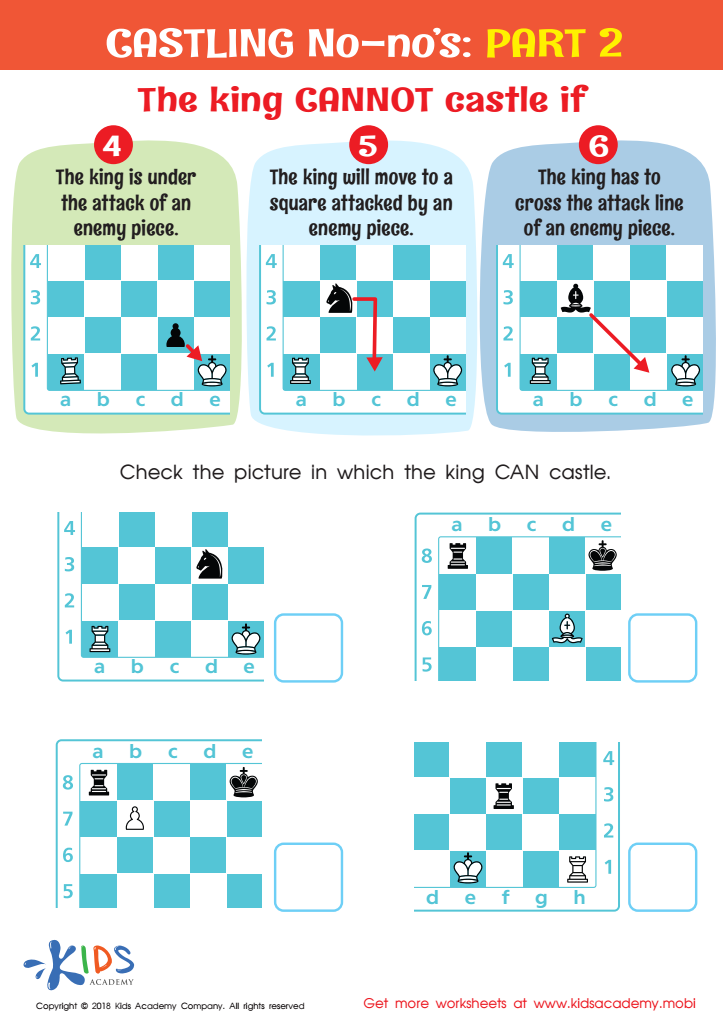

Castling No - no's: Part 2 Worksheet
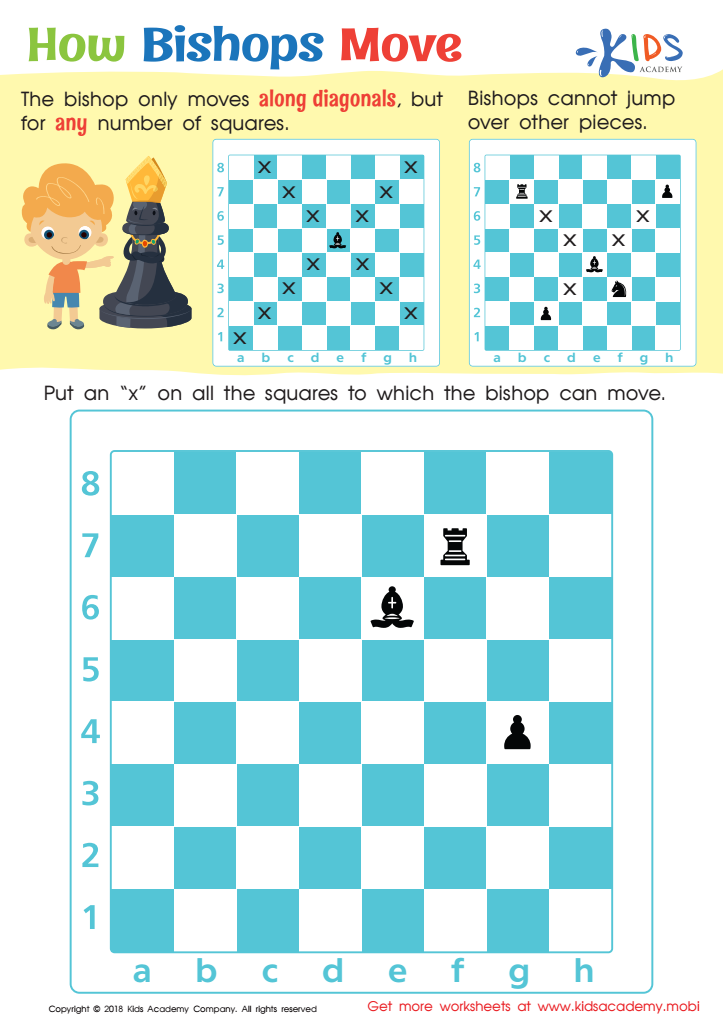

How Bishops Move Worksheet
Strategic thinking development in 6-year-olds is crucial for fostering foundational skills that contribute to their overall cognitive and social growth. Strategic thinking involves planning, problem-solving, and decision-making, which are essential components of a child's intellectual development. By encouraging these skills at a young age, parents and teachers can help children learn to approach challenges systematically and thoughtfully.
Firstly, strategic thinking enhances problem-solving skills. Children learn to identify goals, anticipate possible obstacles, and evaluate different approaches. This ability to think ahead and prepare for various scenarios builds resilience and adaptability, essential traits for lifelong learning.
Secondly, strategic thinking supports academic success. Subjects like math and science often require sequential thinking and logic. Early mastery of these skills can lead to improved academic performance and a more positive attitude toward learning.
Socially, strategic thinking aids in resolving conflicts and understanding others' perspectives. By engaging in activities that require strategy, such as team games and collaborative projects, children develop empathy and improve their communication skills. This sets the stage for better relationships with peers and adults.
In conclusion, fostering strategic thinking in 6-year-olds lays a robust foundation for academic achievements, personal growth, and social development. Parents and teachers should prioritize activities and experiences that challenge young minds to think strategically, preparing them for future success.
 Assign to My Students
Assign to My Students






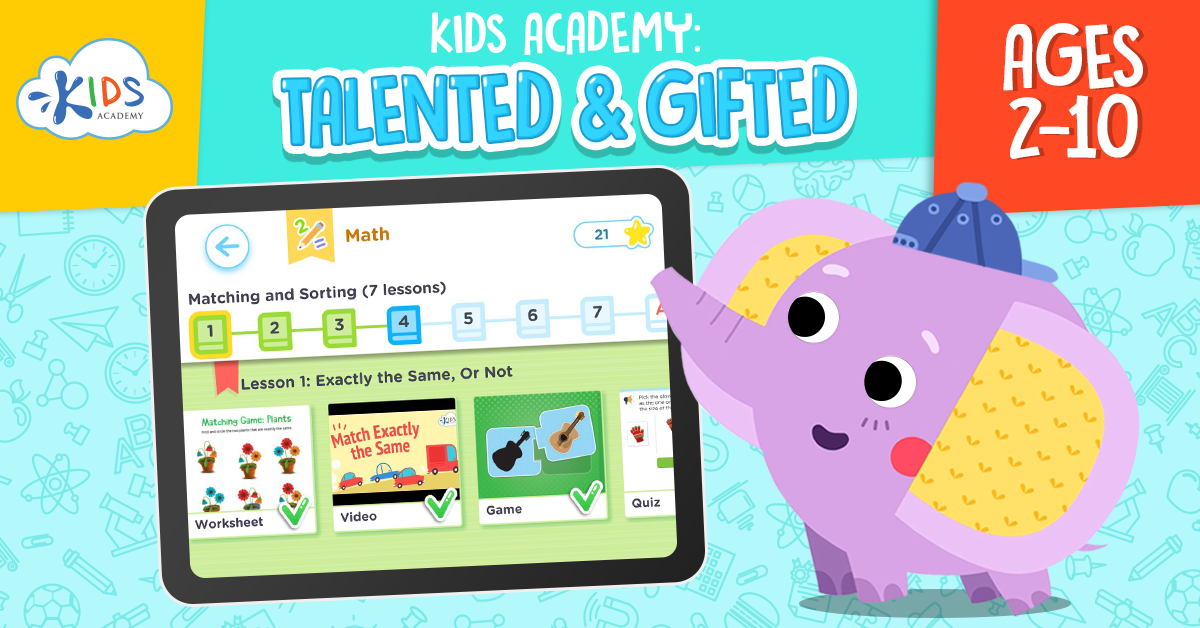
.jpg)












